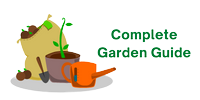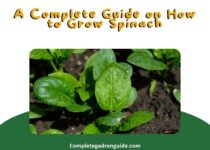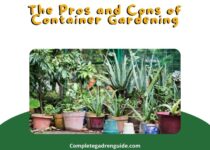How to Choose a Garden Site in 6 Easy Steps?
The first and arguably most important step when starting a vegetable garden is choosing a location for your garden.
Whether you’re just growing some vegetables on your apartment balcony or you have acres of land to till, determining the garden site is always of utmost importance.
The article below will help you determine how to choose the perfect site for your growing your garden.
Choose a Garden Site in 6 Steps
The site you choose for your garden is one of the most important decisions you will make. It will determine the type of plants you can grow, the amount of sun and shade, the drainage, and the soil. All of these factors will affect the success of your garden.
Let’s look at the 6 important factors that should be taken into consideration when you choose a garden site.
1. What Do You Want to Grow?
The first step when choosing a site is to decide which plants or vegetables you would like to grow. Certain species will require full sunlight, while others only need partial sunlight.
Some species are easily damaged by wind, while others are not. You will need to put in the time to research the plants you wish to grow and understand the requirements for their ideal habitat.
It is important to put together a plan for your garden and start putting it down on paper. Better yet, put together a spreadsheet for all the plants you want to grow so you can track their progress after you plant them.
You should try to only plant vegetables that you and your family enjoy eating. This will make your gardening experience much more rewarding and practical. A home-cooked meal with your homegrown vegetables is one of the greatest rewards for a gardener.
2. Consider Time Management
Certain types of vegetables will require much more time and effort than others. For example, leafy green vegetables are typically much easier to cultivate and you can harvest a large amount of produce from just a couple of plants.
Most root vegetables will require more maintenance. For example, radishes and carrots will need to be trimmed when they grow and this can be a long and difficult task.
It is crucial to set aside enough time in your schedule to be able to maintain your garden. A few hours a week is usually sufficient for an average size garden, but some seasonal maintenance tasks may take longer.
3. Check the Hardiness Zone in your Area
Hardness zones describe the lowest temperatures in different areas of the United States. It is important to only grow plants that can survive within your hardiness zone.
If your plants freeze, they will most likely die. Using the hardiness chart is an important step when choosing a garden site.
4. The Importance of Sunlight
Sunlight is easily the most important factor when choosing a garden site, and unfortunately, the one area that you cannot easily control. This can be especially frustrating if you’re growing vegetables in an apartment setting.
When deciding on a garden site, you need to track the amount of sunlight your potential location gets each day. As a general rule of thumb, vegetables should have at least 6 hours of direct sunlight throughout the day.
Every species is different, however, and some will be able to thrive with less than 6 hours of sunlight. Alternatively, you might be able to keep your plants in containers and move them throughout the day to spots with better sun exposure.
Also, keep in mind that the sun’s path changes as the year progresses, and it will be beneficial to keep a record of these changes throughout the year. This would be very valuable info to add to your spreadsheet or garden layout plan.
It is most important that your vegetables receive ample sunlight during the spring and summer months. We could care less if sunlight is missing in the winter because vegetables typically not be growing during the cold months.
Vegetables that can grow well in Low Sunlight: Carrots, Lettuce, Kale, Peas, Swiss chard
Vegetables that require Full Sunlight: Cucumbers, Eggplants, Peppers, Squash, Tomatoes
5. Have a Good Water Source
A reliable water source should not be far from your garden site. If your water source is far away from your plants, you’re probably going to be less motivated to water.
Nobody wants to walk 50 yards with a pail of water.
Depending on your climate, you may not need to water very often, but some hot dry climates may require watering a couple of times per week.
In general, vegetables will need approx 2 inches of water each week. Keep in mind that plants in raised beds and containers may need more than 2 inches of water because it drains more easily.
You have many effective options when deciding how to water your garden. Some people may choose to install a full drip irrigation system, while others may just water their plants by hand.
If you live in an especially rainy climate, such as the Pacific Northwest, it is highly recommended that you invest in a rain gauge to accurately track the level of rainfall. It will help you keep track of the amount of water your vegetable garden receives.
Too little water or too much water can cause equally devastating problems for your plants.
6. Competition from Other Plants
Look around for other plants that might be sucking nutrients from your vegetable garden’s soil. In general, perennial shrubs and small ornamental plants will not pose a huge problem.
In fact, they can actually help with pests and insects in some cases. The most common problem is planting your vegetables near large trees, which are notorious for draining large amounts of nutrients from the soil.
Try to avoid choosing a garden site near any large trees.
Conclusion
When you plan to choose a garden site for the next season, keep in mind the type of plants you want to grow. Some plants need full sun, while others prefer partial shade. Consider the amount of space you have and the amount of time you are willing to spend caring for your garden.
It is also important to choose a site with good drainage. If the site is too wet, the roots of your plants will rot. If the site is too dry, your plants will not be able to get the water they need.
The type of soil you have will also affect the success of your garden. If you have sandy soil, you will need to add organic matter to help the soil hold moisture. If you have clay soil, you will need to add sand to improve the drainage.
Read more about Gardening on Our blog.



